Welcome to My Paint Party!
“Sally, look! My rock turned purple!” Three-year-old Eleanor can’t contain her excitement as she changes the color of a rock with her paintbrush. Ah, the joy of painting rocks with water. Yes, water!

I will be the first to admit that I really wanted to be the educator who LOVED paint and easels and smocks and all of the joy that it gave me on the one day of the month that I actually got to use those paints when I was in kindergarten myself. Yes, I wanted to be that educator!

But I discovered long ago that my vision of paint utopia was unrealistic, which made me feel like a failure of a preschool teacher. I have made peace with my aversion to thick, gloppy, messy poster paints and moved on to watercolors. I’ve perfected the art of keeping them all together in a bag and whipping them out with a flourish to entertain my early learners on a snowy Monday, feeling like a rockstar of an educator. Well, sort of, but not really. The unvarnished truth is that paint is just not my favorite medium.
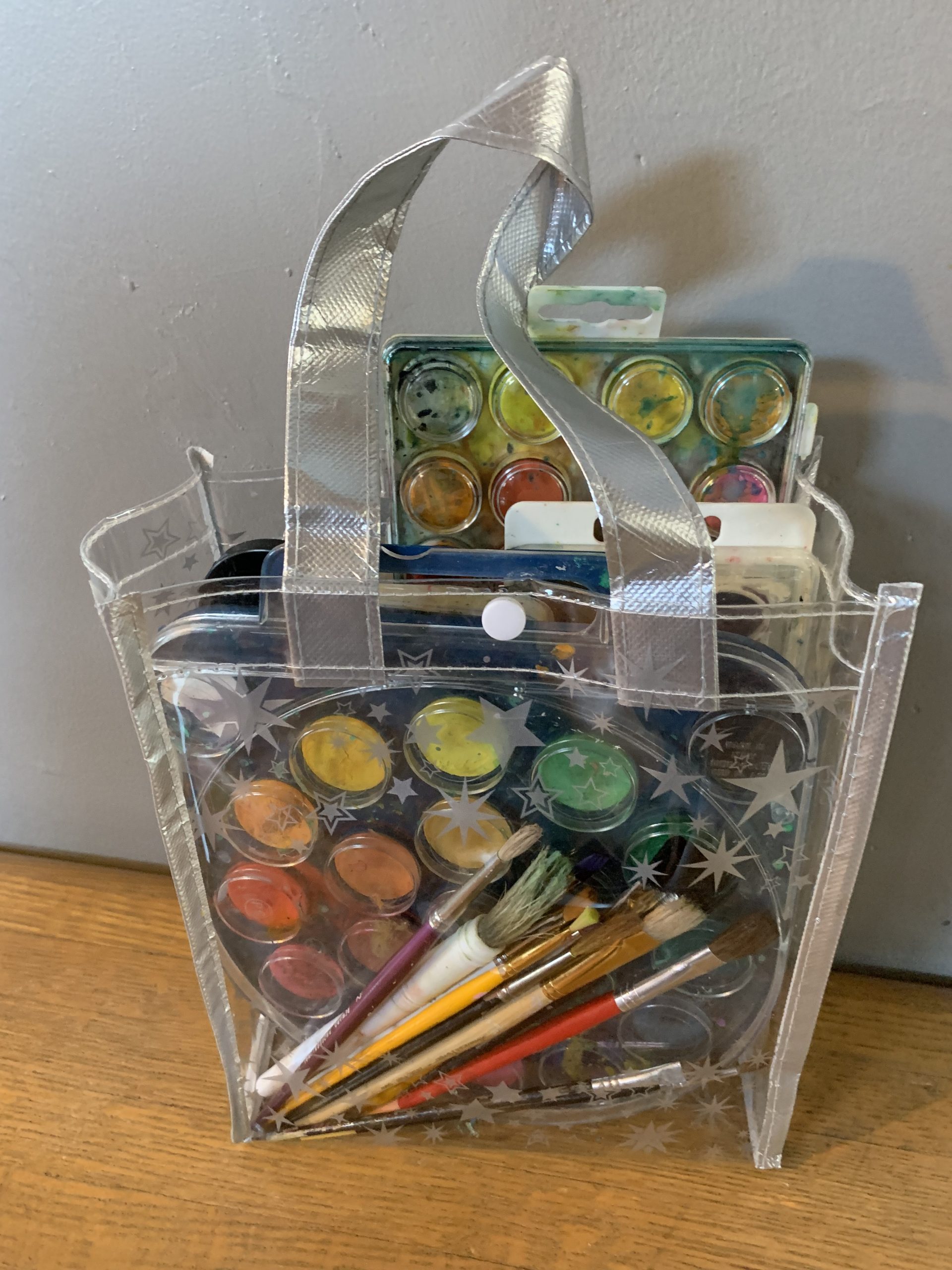
But there is one kind of painting that I really like—and that is painting outdoors with water. If you struggle with the mess that seems to be an inescapable part of painting or your landscape looks different as we navigate the global pandemic, then welcome to my water paint party! Regardless of the age or developmental stage of your students, this kind of painting doesn’t get old. Simply dig out the paintbrushes and a water source and let the celebration begin. You will never, ever go wrong with water play of any kind! On hot or dreary days, just bring out the resources, including whatever you need to document the learning standards that you’ll meet, because this is going to be a hands-on, brain-building bonanza!
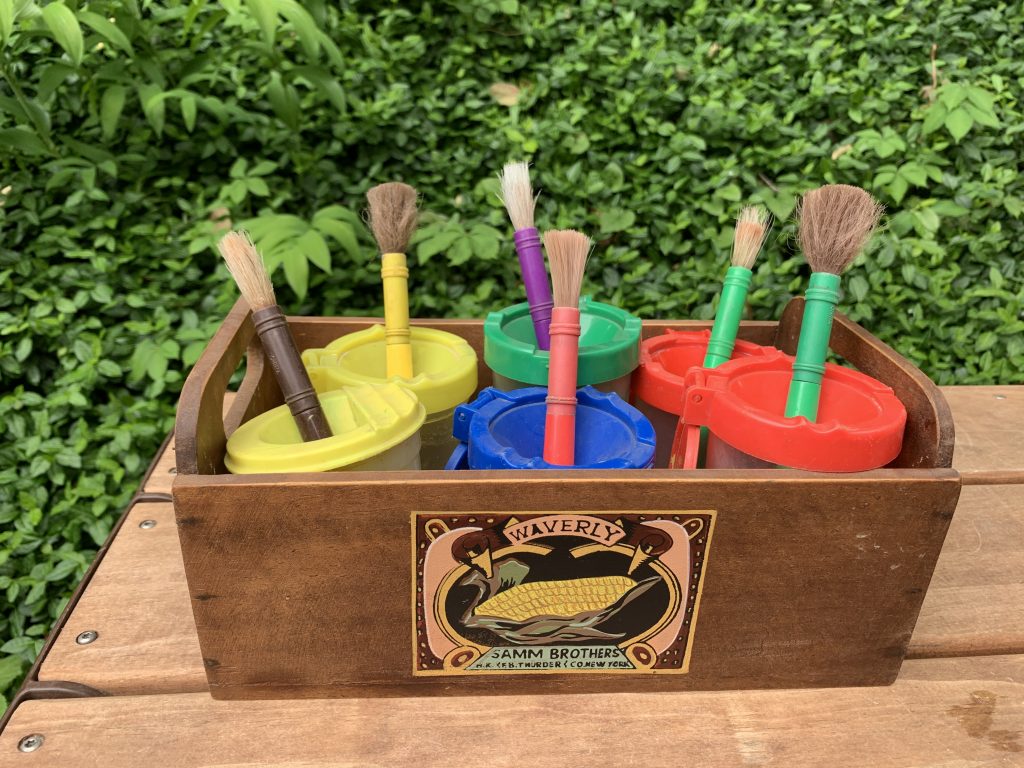
It took me years to figure out how to keep everything in one place for easy access when the mood strikes. Paint rollers or paintbrushes from leftover family paint projects work extremely well. Those bigger brushes and rollers are really great for building the strength and muscles in the hands, wrists and arms, which will make handwriting easier when the time is right. No need to rush that. We’re too busy painting with water, baby!
Wondering how to get started? Use what you have! There is no need to make a purchase for this activity. We like to start out small with younger children. I have all of these supplies from my earlier attempts at what I thought my paint play should look like. Setting the stage with simple materials like paintbrushes and water creates an environment that allows children to become curious scientific researchers.
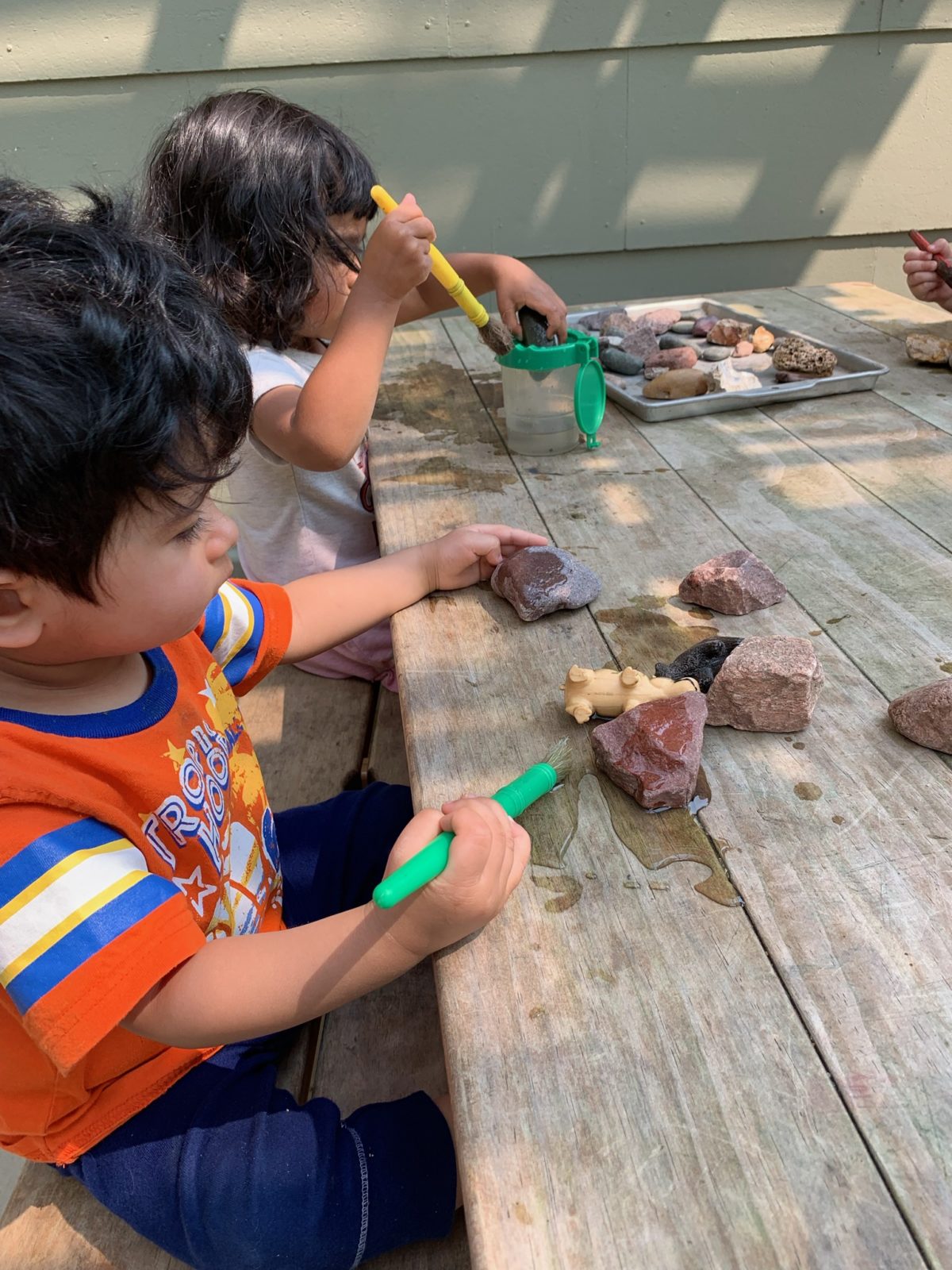
“Will the rock fit in the paintbrush hole in the cup?” Scientific investigation going on right there!
“Wait! My rock isn’t purple anymore!” Eleanor has been so busy painting other rocks that she has just made her way back to her favorite rock. As her friends gather around for a closer inspection, four-year-old Noah says with a giggle, “It evaporated!”
Wow! It’s always a delight when friends can lead the learning with one giant vocabulary word like EVAPORATE!
“Watch. If I paint here on the sidewalk, it will disappear,” Noah adds. “The sun dries it up. It evaporates!”
Without a sound, the whole gang begins painting the sidewalk to see if their watery brushstrokes will evaporate as well. This is hands-on, child-led learning at it’s finest. So much is happening in this moment. We have children using their leadership and language skills and mentoring their friends. We have scientific inquiry happening at their level of understanding. We have PLAY!
Don’t be surprised if the sidewalk, chairs, tables or other loose parts make their way into this adventure. It’s fun to watch their brains light up with observations, predictions and cause-and-effect scenarios as the water changes each surface it touches. Preschool children have an innate passion to investigate and make sense of the world around them. By integrating science and mathematical discoveries into their play, we are giving them a strong foundation and understanding of their world.
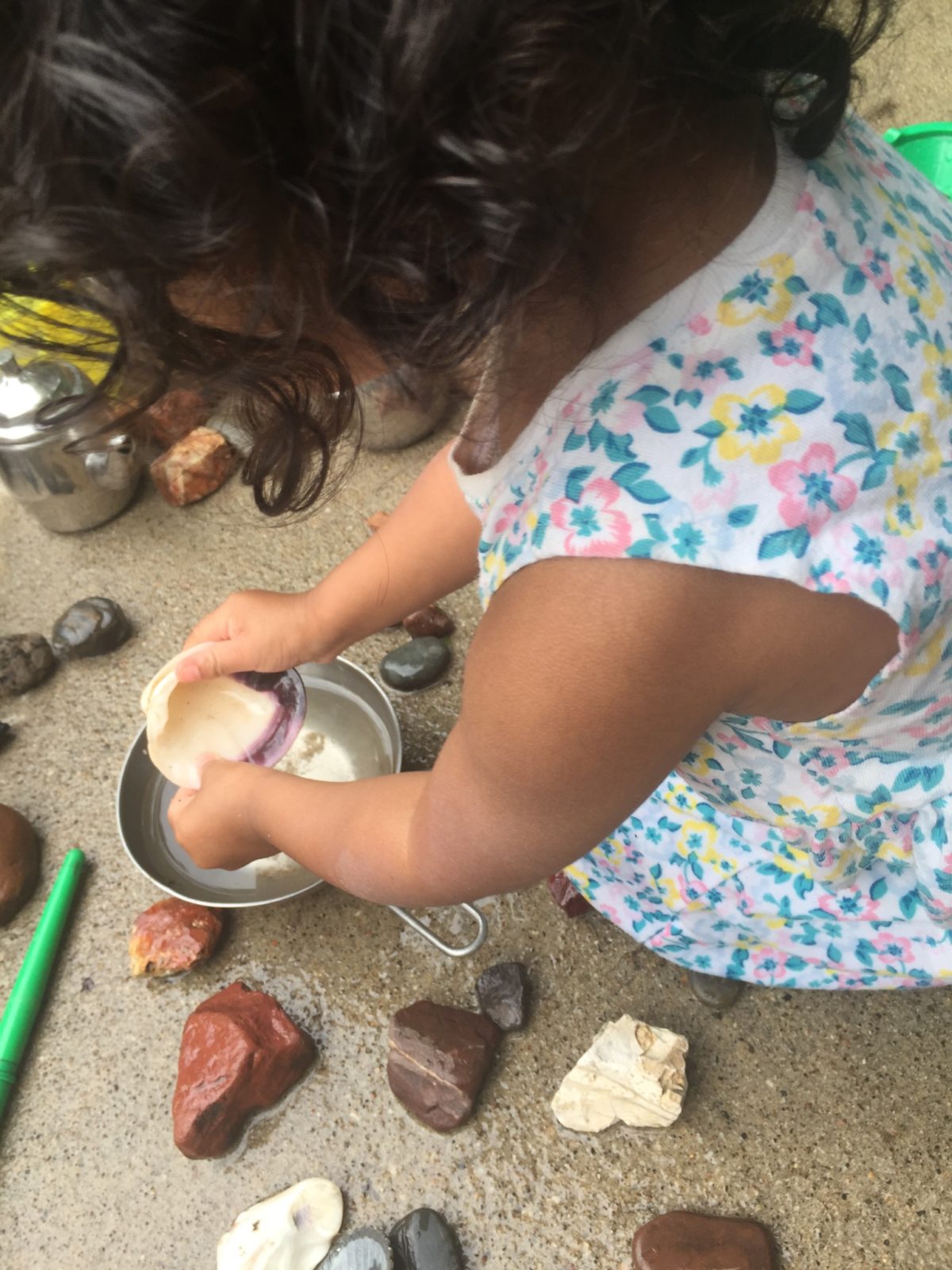
As the children in the group begin to express wonder and share their observations, the water play generally takes on a life of its own. By bringing in buckets and pans of water, along with a collection of pouring cups and pitchers, we can extend the learning into the mathematical world of quantities, estimation and volume. All of this is data analysis. It may not yet be recorded on paper, depending on the development of your group, but you are planting the seeds for this activity in the coming years.

Add this to your toolbox of outdoor learning.
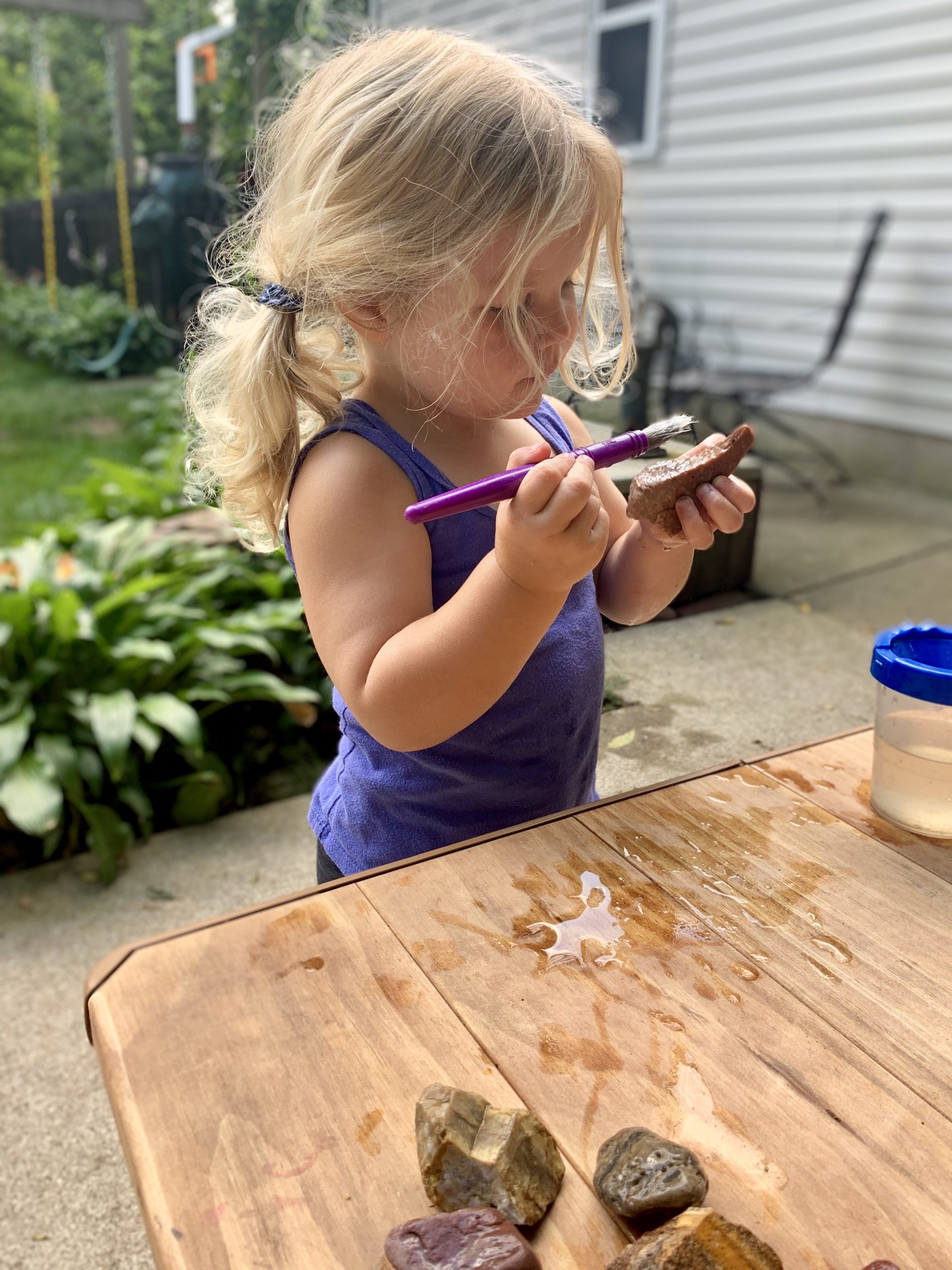
Of course, we often bring this activity indoors as well—usually in the early spring, when the snow won’t melt and the sun won’t shine. My indoor setup usually looks something like this:
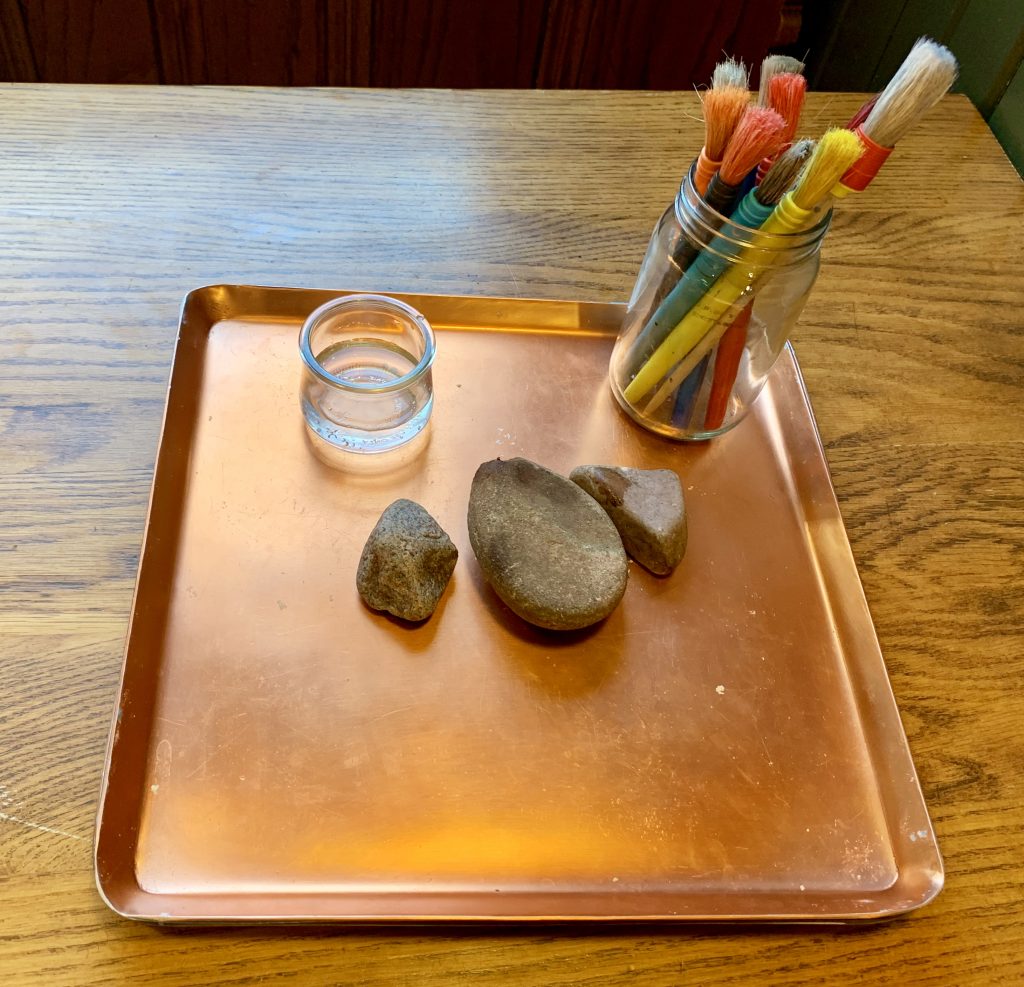
It’s a great crabby Monday activity that will surely lighten the mood in your classroom. Happy water painting!
good ideal
I was very please with the information in the blog . it gave me some very useful insight to how I should introduce math to young children
Love this! We like painting on the sidewalk with water.
love the idea of art and creativity playing a part in teaching math
I love that idea, I will try that with my class.
I enjoy watching children use nature items for learning. Great ideas for young children.
I love the idea of painting with water it allows the children to learn how to paint and see the different colors that paint allows objects to become without all the hassle of cleaning up or someone accidentally making a mess.
This is a great outdoor/indoor activity. You can collect rocks outside and take them inside to paint.
How fun….fine motor practice, stacking, lining up, sorting. So much to learn here
WE ARE PLANNING A ROCK GARDEN SO THIS WAS WONDERFUL!!!